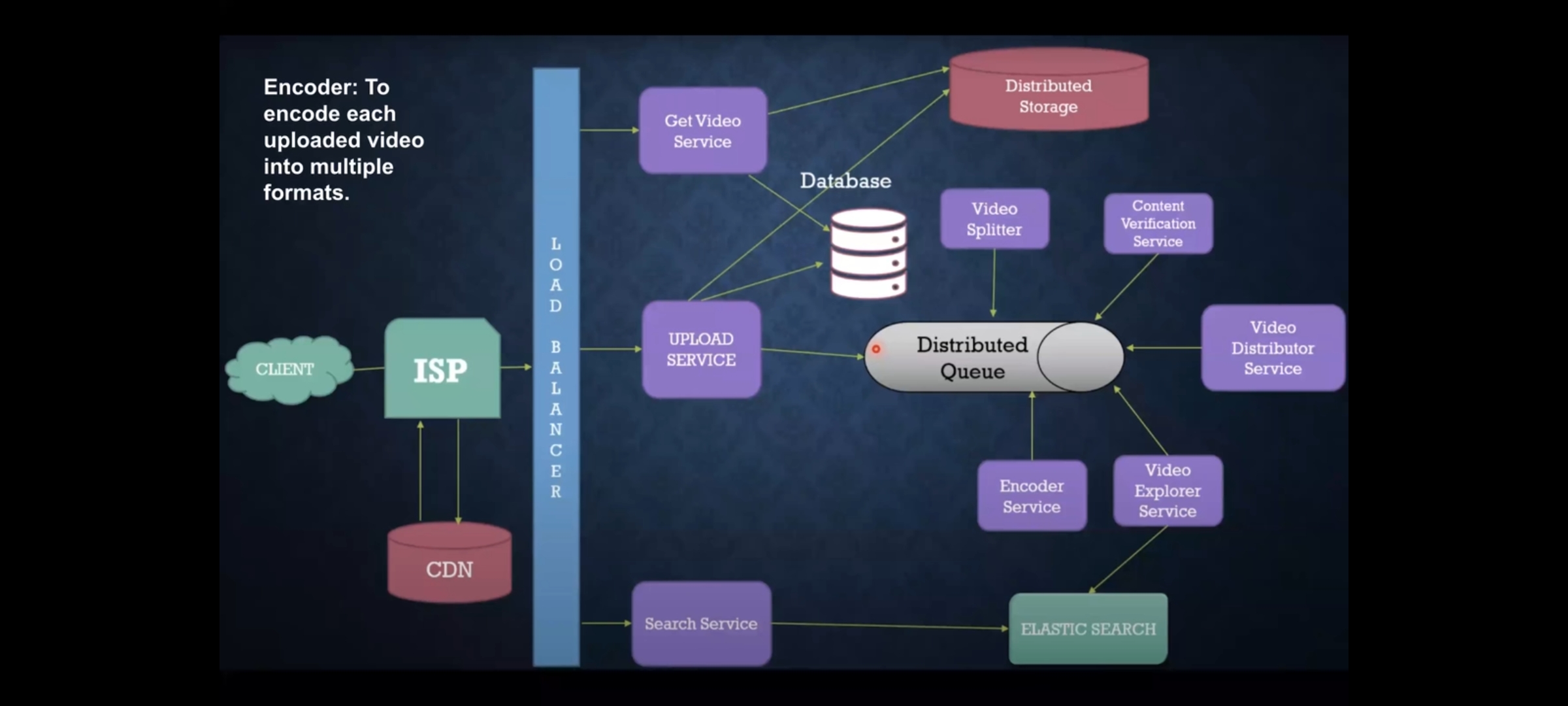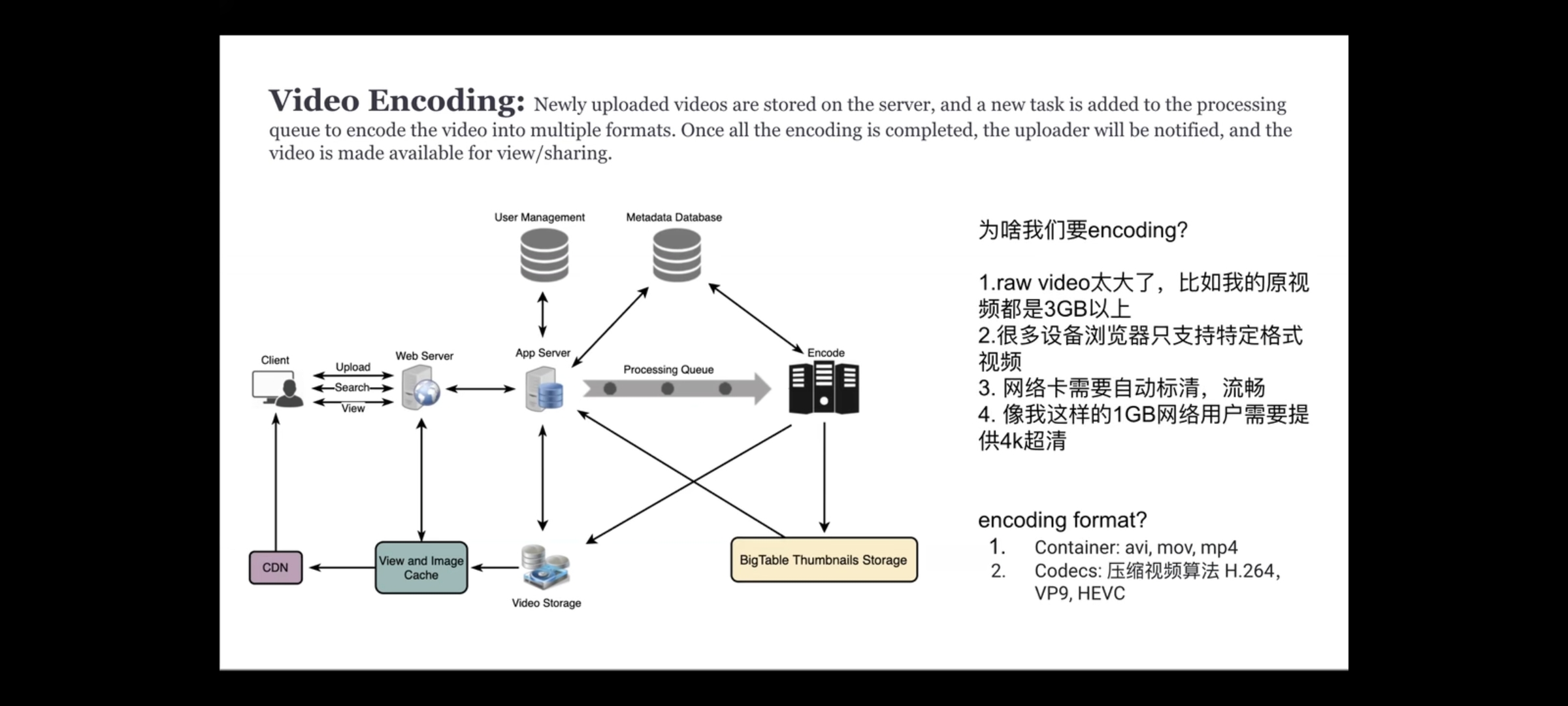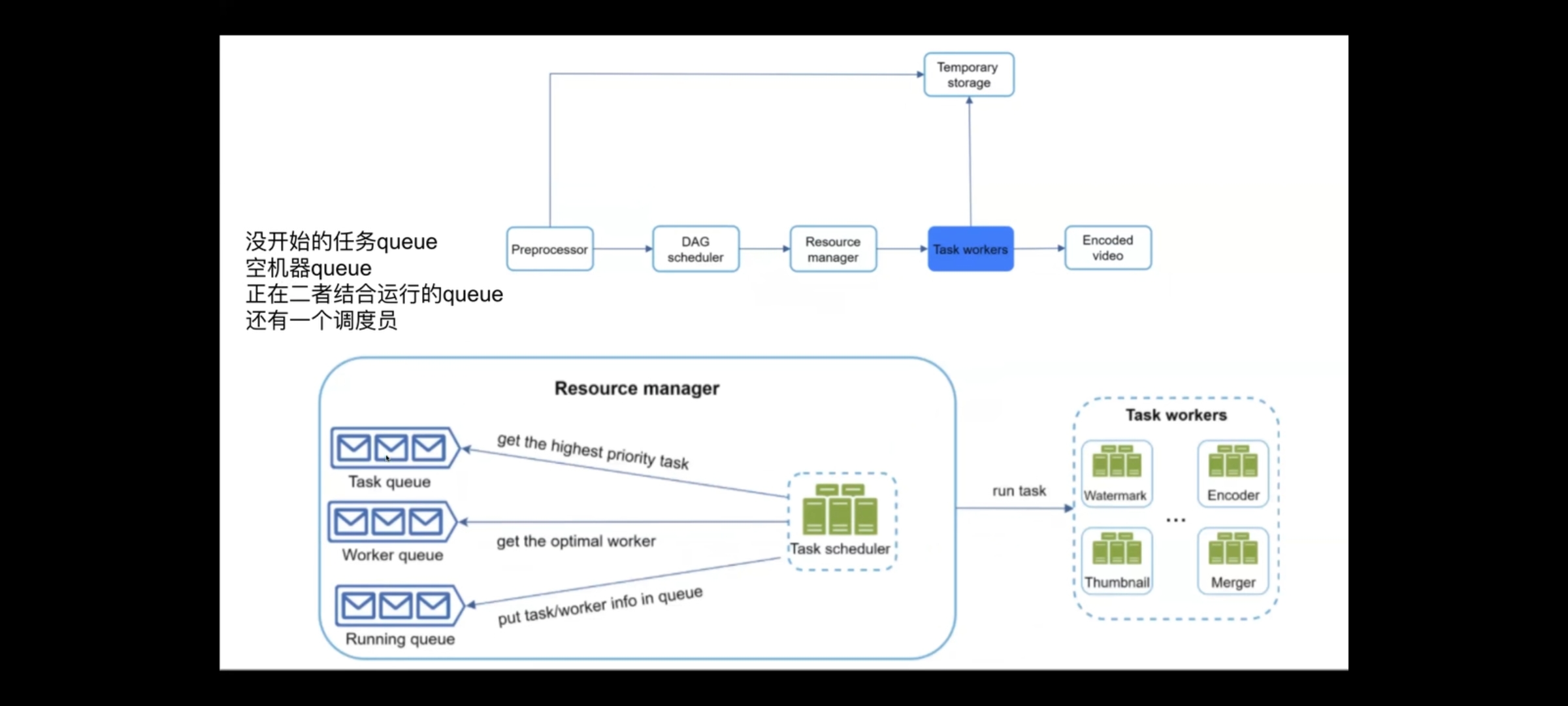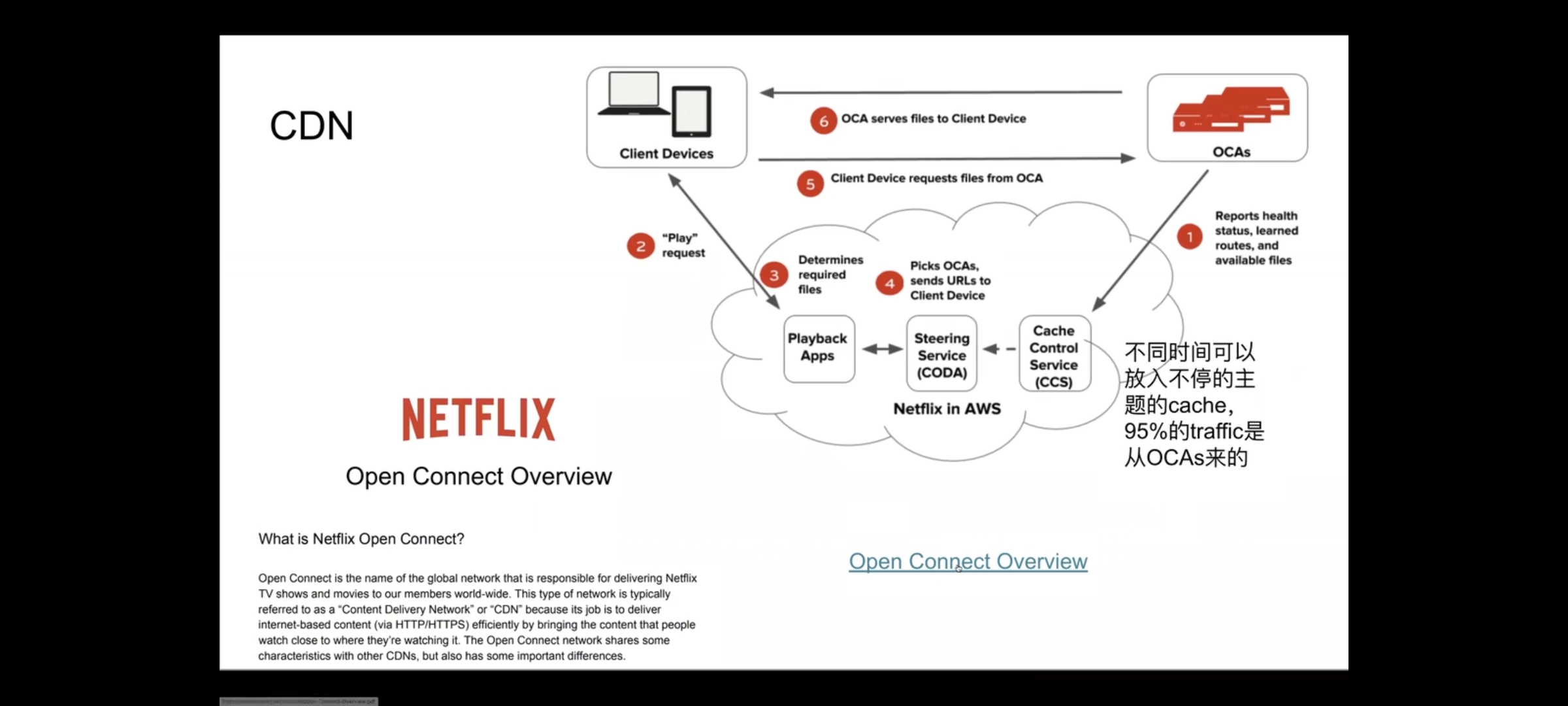Design Video Streaming System
Requirement clarification
functional requirement
- upload video
- share video
- search video
- change resolution
- record: likes/dislikes, total views, comments
non-functional requirement
- reliable, video will not lost
- available, watch with poor network
- real-time, limited video lag
extend requirement
- recommend
- TopK popular
- subscribe channel
- favorate
- subtitle translate
- advertisement
Scale of the system - data size
Traffic estimates
- youtube have 2billion users, DAU 1billion = 1000M,every user watch 5 hours per day,
1000M * 5 / (24 * 3600) = 57K videos/sec upload:view = 1:200,upload TPS = 57K/200 = 285 videos/sec
Storage estimates
- videosize: 50MB/minutes; 10minutes per video
300(285)videos/sec * 60sec * 10min / 60min = upload 3000 hours videos/hours=>3000hours * 60min * 50MB = 9TB/min = 150G/sec
Bandwidth estimates
- input(upload) bandwidth:
3000hours * 60min * 10MB = 1.8TB/min = 30GB/sec -
outgoing bandwidth:
30GB/sec * 200 = 6TB/sec - Amazon CDN per GB $0.02
150GB/sec * 0.02$ * 24hours * 3600sec = $259,200 per day
Memory cache estimates
- just use CDN to accelerate video streaming
API interface
uploadVideo(dev_key, video_title, video_description, tags[], category_id, default_language, recording_details, video_contents),return 202searchVideo(dev_key, search_query, user_location, maximum_to_return, page_token,return jsonstreamVideo(dev_key, video_id, offset, codec, resolution, return stream
Database data-model
-
MySQL(ACID)
- billing information
- user information
- transaction information
-
NoSQL(Cassandra)
- heavy write and read(9:1)
- smaller storage footprint
- save viewing history, not delete, huge size
- Live Viewing History(LiveVH): save detail information
- Compressed Viewing History(CompressedVH): a large amount of older viewing records with rare updates.
-
Pure video chunks
- saved in Amazon S3
-
Video
- VideoID
- Title
- Description
- Size
- Thumbnail
- Uploader/User
- likesCount
- dislikesCount
- viewsCount
-
VideoComment
- CommentID
- VideoID
- UserID
- Comment
- TimeOfCreation
-
User
- UserID
- Name
- Address
- Sex
- Age
High-level design

Detail design
- Read Heavy System partition(for write) and replication(for read)
- Compress 480p first, and compress other 1080p, 1440p after 1 hour
Video Encoding
- why encoding ?
- raw video is too big, like 3GB
- different device support different format
- different network condition need different resolution
- format: avi, mov, mp4, dash, hls, m3u8
- codecs: H.264, VP9, HEVC




Bottlenecks(follow up)
- flash upload(same hash code)
- split parellel upload
- upload to nearby datacenter or cdn
- scale up everything,loosely coupled system(MQ)
- cost-saving optimization
- only use CDN with popular videos
- different area not need distribute
- self-build CDN

-
error handling
- encode retry
- can not recognized file
- API server down, consistent hashing
- DB server down,failover(slave become a master)
-
Metadata Sharding distribute out data onto multiple machines wisely
- Sharding based on UserID
- Pros
- fast for one user’s video
- Cons
- hard to search video name
- famous person will cause bottleneck
- uneven distribution
- Pros
- Sharding based on VideoID
- Pros
- fast for one video
- Cons
- hard to search video belong to one user
- popular video will cause bottleneck, solve with cache
- Pros
- ElasticSearch
- Sharding based on UserID
-
upload breakpoint resume
- offset